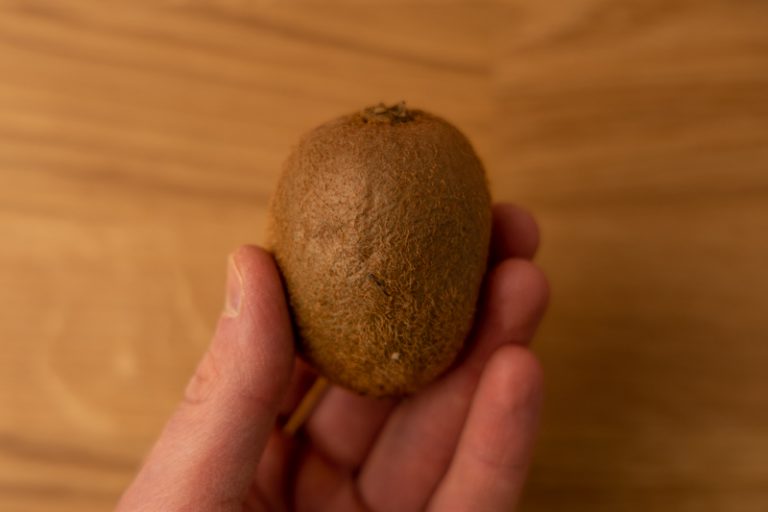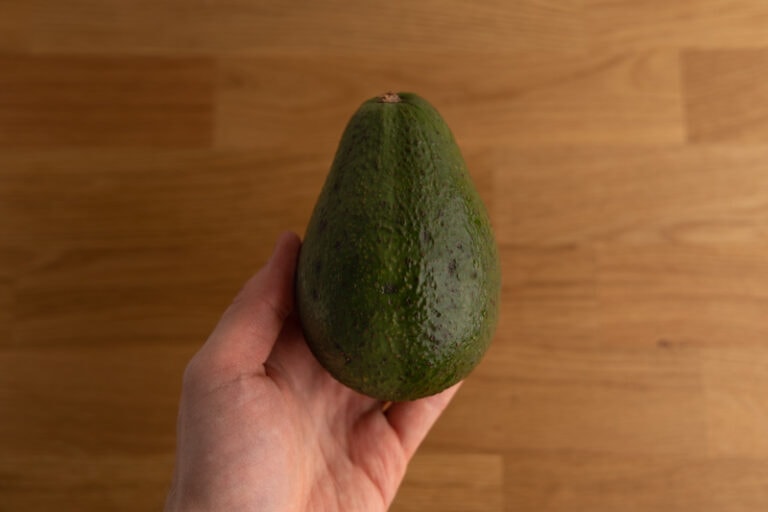Can You Freeze Cantaloupe? [Yes, Here’s How]
Here’s a short guide to freezing cantaloupe. Learn how to freeze the fruit, what to expect after defrosting, and what are the best ways to use cantaloupe after freezing.
Got an extra cantaloupe or two that you don’t want to go bad? That makes you wonder: can you freeze cantaloupe?
Cantaloupe is noticeably softer after freezing and works well only in certain dishes, like smoothies and baked goods. To freeze cantaloupe, cut it up, pre-freeze on a cookie sheet, transfer it into a freezer bag, and replace in the freezer.
That’s the gist of it.
Interested in learning more? Here’s what we cover below:
- details on what to expect from freezing cantaloupe
- a step by step description of the freezing process (and some modifications)
- ways to defrost the fruit
- ideas on how to use frozen cantaloupe
Read on.
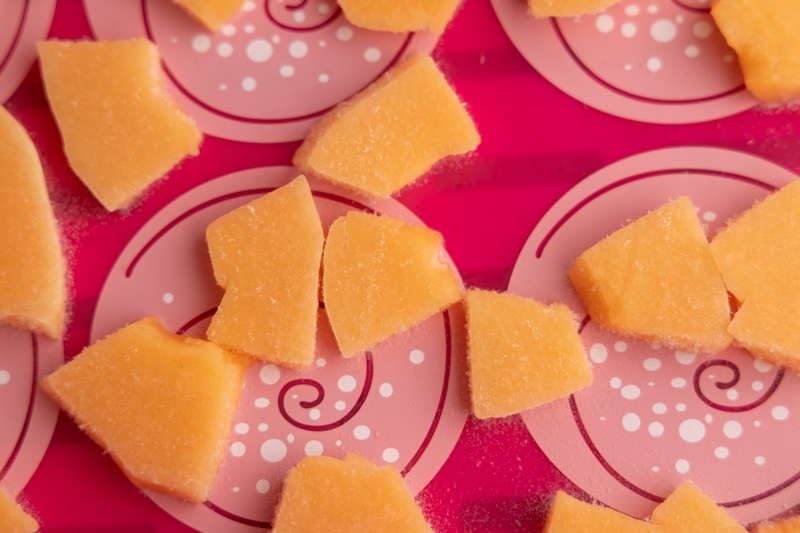
Does Cantaloupe Freeze Well?
Cantaloupe freezes okay, but not great.
The flesh is noticeably softer after defrosting, so you probably wouldn’t like to eat it as-is or throw it into a fruit salad. But for smoothies, sorbets, and all sorts of baked goods, the texture change isn’t an issue, and you can use frozen cantaloupe in these no problem.
Then there are recipes that call for cantaloupe puree. In these, frozen cantaloupe should work just fine as well.
The only thing you need to watch out for is the texture of whatever you’re cooking. For example, if you discard all the water left after defrosting the fruit, you might need to add a teaspoon or two of water to the dish to make up for the discarded amount.
(In almost all cases, you’ll instinctively know if you need more water or not, so that’s not a big deal.)
Long story short, cantaloupe freezes fine, and there are lots of recipes you can successfully use this fruit in after freezing.
Cantaloupe lasts for 2 weeks or even longer if refrigerated, so if it’s fresh, you still have some time to use it. Check out my article How long does cantaloupe last for details.
Knowing that, you’re probably wondering how to go about the freezing process. Let’s cover that.
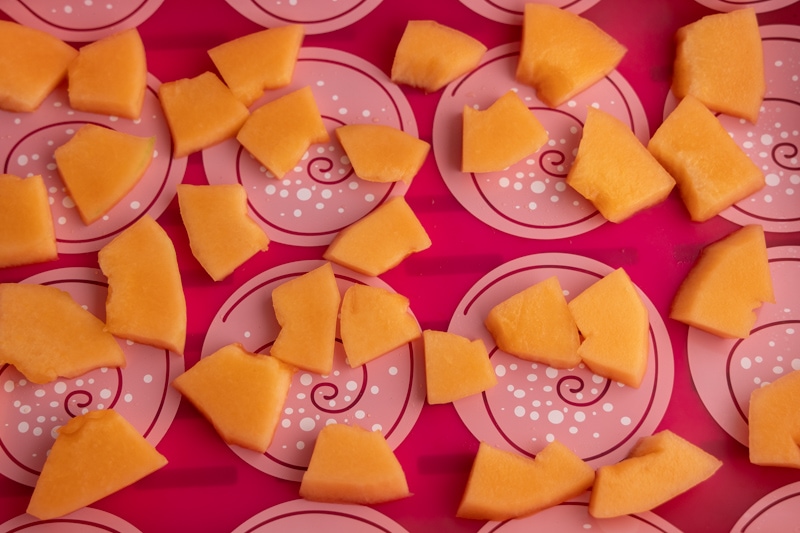
How to Freeze Cantaloupe
Here’s how to freeze cantaloupe:
- Prep. Wash and cut up the fruit. I suggest you dice the cantaloupe or cut it into small chunks, as either works great for most uses. If you’ve already planned how you’ll use the fruit, feel free to cut it in a way that makes the most sense to you. Finally, let the chunks dry for 10 to 15 minutes or pat them dry using paper towels. That will help reduce the amount of frost that’s produced.
- Pre-freeze. Grab a cookie sheet and spread out the chunks on it in a single layer in a way they don’t freeze in lumps. If you want to make removing the fruit from the sheet easy, line it with a silicone mat or baking paper beforehand. Next, put that tray in the freezer for 2 to 3 hours, or until the cantaloupe chunks freeze solid.
- Transfer to a freezer bag. Once frozen, take the cookie sheet out of the freezer, break apart any chunks that froze together, and transfer everything into a freezer bag (or bags). Remember to squeeze out the air before you seal the bag. Add a label with its contents and date if you like.
- Freeze. Chuck the bag with the frozen cantaloupe in the freezer.
That’s it. As you can tell, the process is as simple as it gets and takes only a couple of minutes of active time.
(You can use the same process to freeze honeydew melon or freeze leftover watermelon.)
Now, you might have some further questions about it. Let’s cover that.
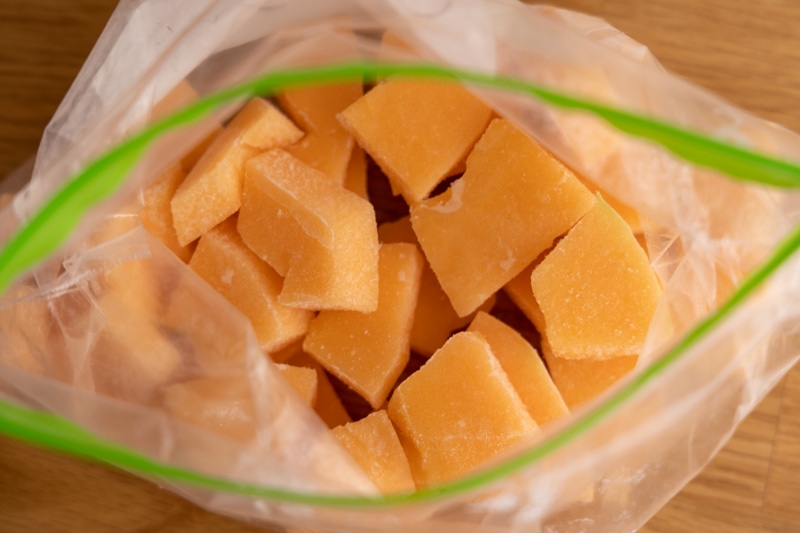
Do You Have to Pre-freeze the Cantaloupe?
No, but it allows you to quickly grab as many chunks from the bag as you need. In other words, it makes it easy for future you to use that frozen cantaloupe.
Of course, if you already have a plan in place and know precisely how much cantaloupe you need, pre-freezing is not necessary. Instead, you measure out and freeze the required amount in a single bag and skip pre-freezing.
But if you want to freeze the cantaloupe just to prevent it from going bad, not knowing how you’re going to use it, pre-freeze the chunks. You’ll be glad you did it when you’re ready to use it.
How Long Can You Freeze Cantaloupe?
There isn’t a cut-and-dry answer to that question, but I suggest using it within 3 months of freezing for good quality.
Like any other frozen food, cantaloupe gradually loses quality, so the sooner you get to it, the better.
Obviously, it’ll never go bad in the freezer, so if yours sits there for half a year already, it should still be quite alright, and definitely safe to use.
Can You Freeze Pureed Cantaloupe?
Sure. While the default method (chunks) works well for all uses, you can freeze the fruit pureed if you know you’ll need it pureed at some point.
If you do so, skip the pre-freezing stage. This way, all you need to do is to transfer the puree into an airtight container and chuck it in the freezer.
Last but not least, you can easily puree defrosted cantaloupe if need be. That means you don’t have to decide just yet if you need to process it or not.
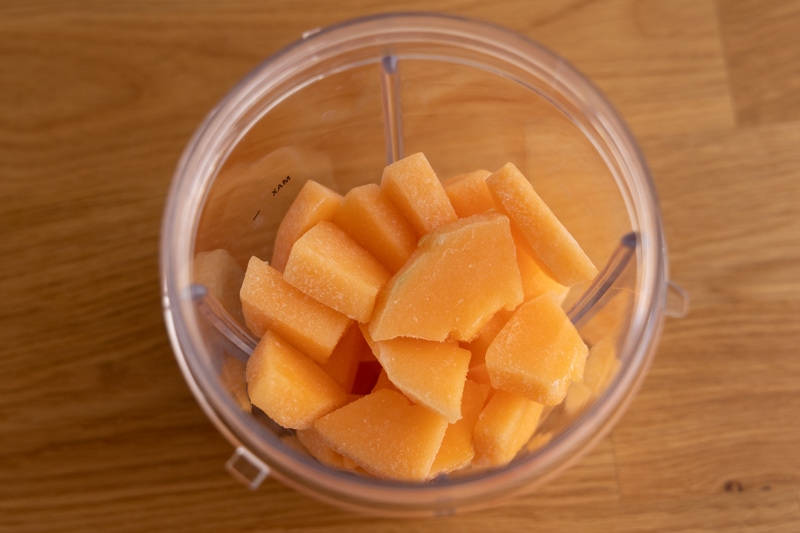
Can You Freeze Grated Cantaloupe?
Yes. If your recipe calls for grated cantaloupe, I suggest you take care of that before freezing. Grating a firm fruit is much easier than working with frozen or defrosted-and-soft chunks.
If you freeze your cantaloupe grated and you’re not sure how much you’ll need for a recipe, I suggest pre-freezing it in tablespoon-sized portions. That allows you to grab as much as you need without defrosting the whole bag.
How to Defrost Cantaloupe
If you need to defrost the cantaloupe, use an airtight container or resealable bag, and thaw the fruit overnight in the fridge. Bear in mind that there will be some water in the bag or container after defrosting.
In most cases, you can just drain that water and use the fruit. But as I already pointed out, in some recipes, that extra bit of water might be crucial to get the consistency you want (e.g., fix your shortbread batter that’s a bit too dry).
So if the texture of what you’re whipping is tricky to get right, set that water aside in case it’s needed. Or simply add a teaspoon or two of water to make up for the loss.
Try to use defrosted cantaloupe within 1 to 2 days. And refrigerate any leftovers that you don’t use right away.
Related: How to store cantaloupe?
Now, the good news is that you don’t always have to defrost frozen cantaloupe. In some cases, you can throw it in straight from the freezer, and everything should turn out just fine.
(Or the fruit being frozen is what’s required for the recipe to work, as is the case for sorbets.)
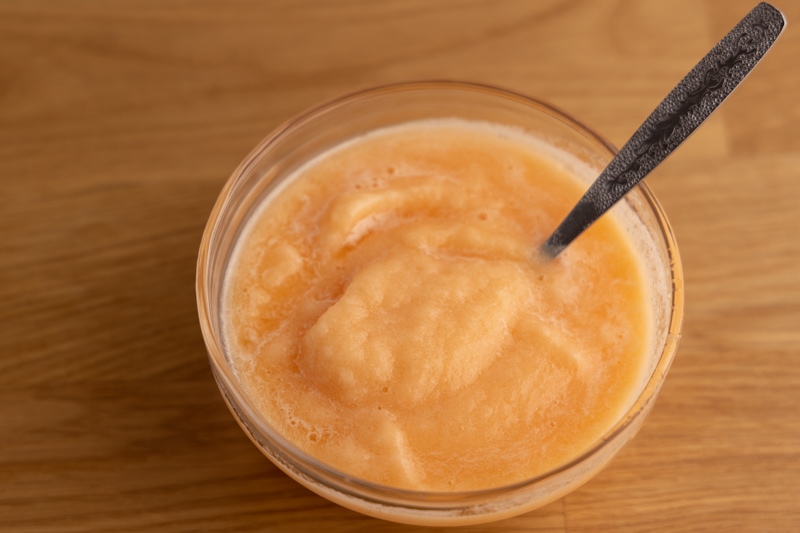
Ways to Use Frozen Cantaloupe
There are numerous ways to use frozen cantaloupe. Here are some of the more popular ones:
- Make a sorbet. Here’s a simple recipe worth testing out.
- Make a smoothie. If your blender can handle ice cubes, you can even skip defrosting the fruit and throw it frozen instead. Or even replace your ice cubes with frozen cantaloupe chunks.
- Bake some muffins. There are hundreds of muffin recipes out there – here’s one to get you started.
- Throw it frozen into a glass of water for a fruity drink on a sweltering day.
- Bake a quickbread. Here’s how that might look like.
Of course, there are many other options to use frozen cantaloupe. Here’s yet another recipe you might find useful if you’re into baked goods. This one uses grated cantaloupe, so make sure you grate yours before freezing it.
Rotten Records: Share Your Snap!
Caught some food past its prime? Upload your photo to “Rotten Records” and help others spot the signs of spoilage. Every image makes our food community safer and more informed!
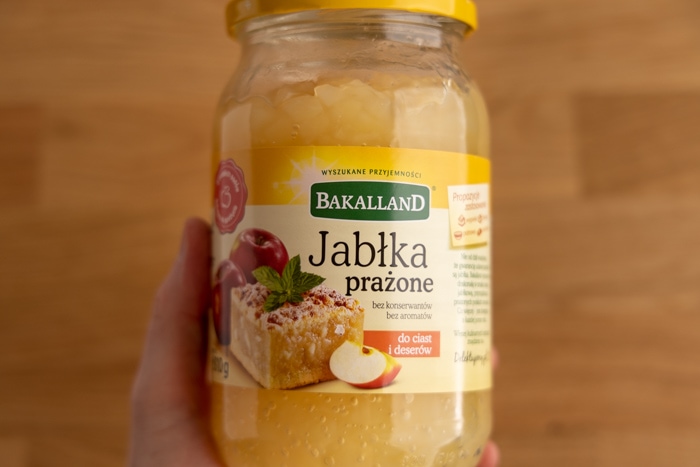
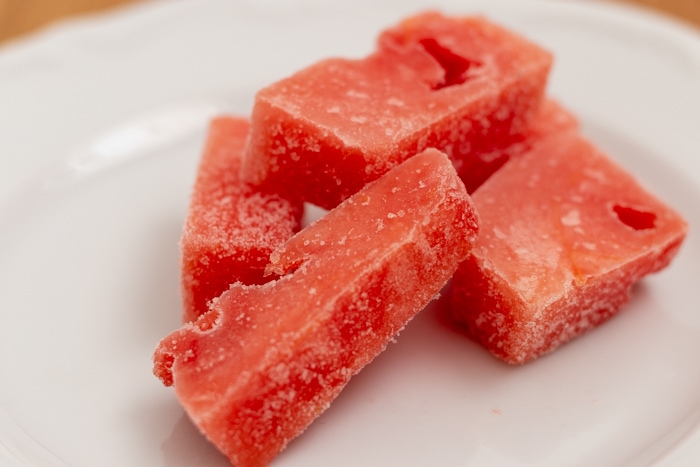
![Can You Freeze Pineapple? [Yes, Here’s What You Should Know]](https://www.doesitgobad.com/wp-content/uploads/Pineapple-in-freezing-bag-768x512.jpg)
